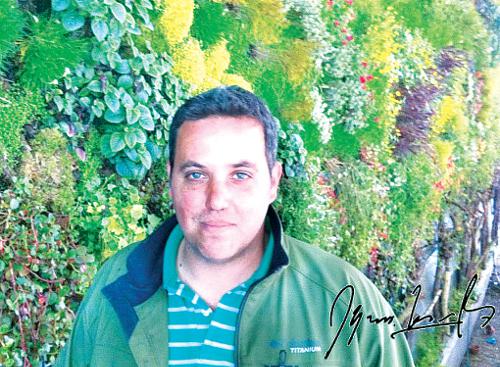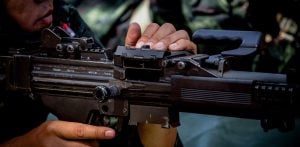Consultant says gray out, green in for Phuket’s real estate boom in 2014 and beyond

PHUKET: Back in November, an energetic Chilean man paid a visit to the Phuket Gazette offices. Identifying himself as Ignacio Espoz Babul, the Director of (Santiago-based) LatinGreen – a patent holder, innovator and installer of “Green Walls” – the man passionately talked of a coming “Green Revolution” that he had envisioned for Phuket and the whole of Asia.
In the 80s, Babul watched with concern as the houses with gardens and trees as well as parks in his native Santiago de Chile disappeared to make way for larger buildings and urban sprawl. He had an idea to repurpose these lost spaces onto the roofs of buildings and even incorporate them into vertical walls.
As a commercial engineer Babul had the knowledge necessary to transform his vision into reality as director of LatinGreen and founder of the World Green Infrastructure Network (wgin.org). In addition to creating green infrastructure, he organizes lectures and events worldwide.
Following is the first part of that spontaneous, albeit stimulating interview:
Phuket Gazette: In simple terms, what are green walls, roofs or buildings?
Living wall systems are comprised of pre-vegetated panels, modules or planted blankets that are affixed to a structural wall or free-standing frame. These modules support a greater diversity and density of plant species, including a lush mixture of groundcovers, ferns and low shrubs, perennial flowers and edible plants. Living walls can perform well in full sun, shade and interior applications.
We’re looking to build the systems in Phuket; the whole construction process would be realized by us, from the technical analysis, to the landscaping (art) and construction. We can even consult about using a patented eco air conditioner and purifier that can be used with solar or wind energy.
What is your vision for Phuket/Thailand – what opportunities do you see here?
Thailand is a beautiful country rich in resources and opportunities; the particular way of life here – one that divinely values HM the King, upholding a great respect for religion as well as friendly cordiality to strangers; and so, the world’s tourists prefer this destination, with the number of visitors increasing exponentially every year.
Phuket especially has a dynamic economy, driven mostly from the tourism and real estate sectors, which has triggered a surge in demand for new buildings, apartments, malls and hotels.
Now is the time – this is the moment where we can be in harmony with nature. Building green means eliminating the otherwise imposing gray, which will have an immediate impact on the environment and aesthetics of places.
My vision points towards the government, private sector and all the people of Thailand who have a special appreciation for nature: once you all have more information, options and offers, I’m sure the green infrastructure will become an integral part of the architecture.
We have the ability to build the projects – small, large and multiple units. The aim is to generate demand so that economies of scale apply to enable lower production costs.
In the first phase, we aim to make known the different elements of green infrastructure, to stress the importance of having the city be in harmony with nature, it’s people, their children and visitors. The central idea is to incorporate the dynamic real estate boom.
Initially, we’ve been in contact with the Phuket provincial government, establishing a healthy dialogue that includes improving aesthetics and functionality of the island’s strategic points such as the airport, shopping plazas, advertising and road info points, schools and tourist areas.
I’m also looking to organize lectures at the local universities, to spread awareness among prospective entrepreneurs, investors and partners.
Green infrastructure is the perfect concept for tourism businesses, shops, banks or service companies, as well as for private applications.
What kind of capital investment is needed in terms of US$ per square meter?
There are a lot of economic and environmental benefits, which can be translated into profit from investment. The investment will depend on the size of the project, plant varieties used and the technical elements that can be applied. In addition to construction of the roofs and walls themselves, clients might consider additional elements to add more automation and productivity, namely solar and wind power to supplement lighting, water pumping and even eco air conditioning.
The rate can range anywhere from US$40 to $1,000 per square meter, depending on whether it’s just a simple grass garden, or with bonsais, waterfalls and hundreds of other options.
Stay tuned for the rest of the interview with Ignacio.
— Steven Layne
Latest Thailand News
Follow The Thaiger on Google News:


























